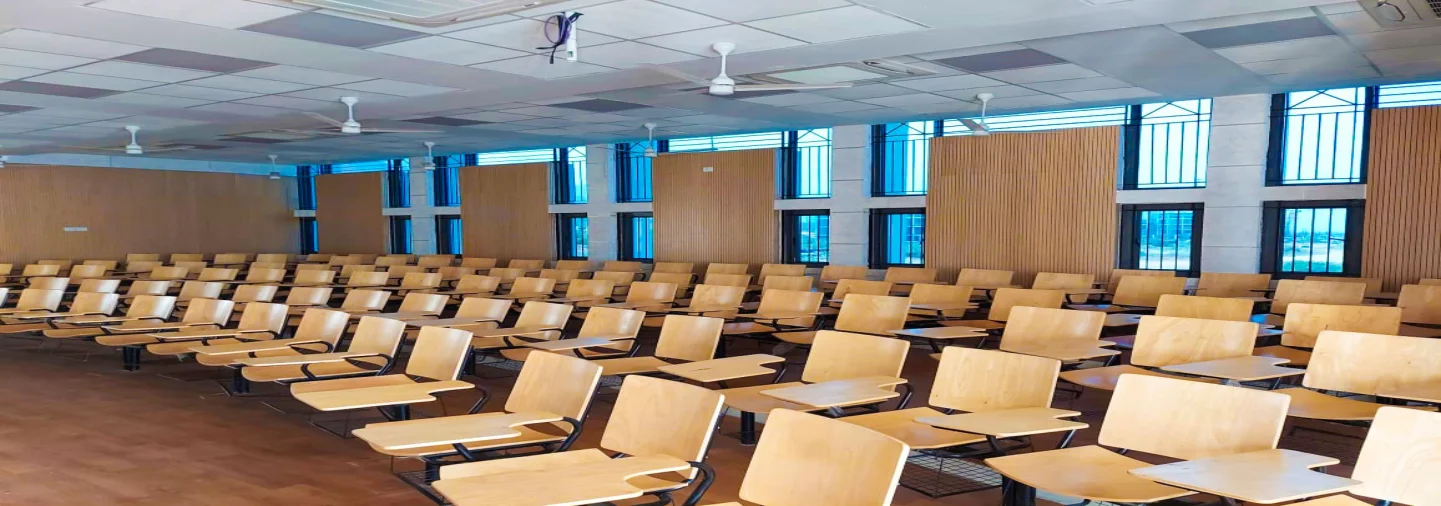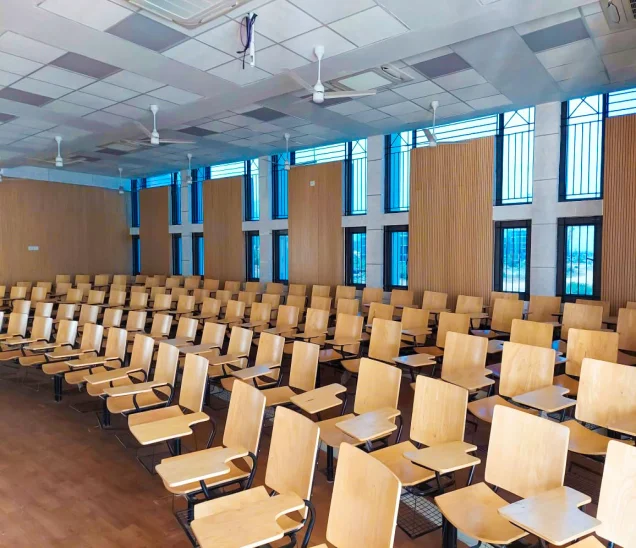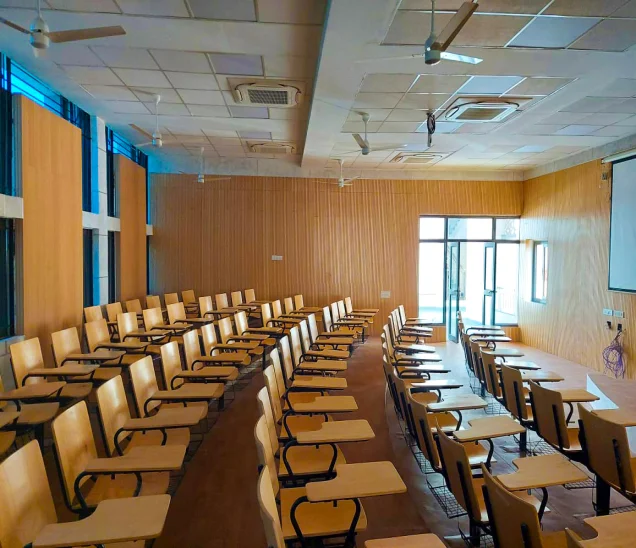
Lecture Hall
In education, communication is everything. From a professor's lecture to a keynote address, hearing, understanding, and retaining information depends fundamentally on the space's acoustics. A well-designed lecture hall doesn't just house an audience - it carries their attention, guiding sound with precision to every seat. Unlike performance venues that celebrate reverberation, lecture halls demand a different kind of acoustic intelligence. Here, speech intelligibility takes priority. Every syllable should arrive cleanly, without blur, echo, or unintended coloration. In today's multi-modal classrooms with AV systems, video conferencing, and blended learning, the room's acoustics must adapt seamlessly to physical and virtual audiences.
In a typical lecture hall, sound behaves in complex ways. Voice projects from a stage or podium reflect off hard surfaces, disperse into seating zones, and interact with the room's geometry. Without control, this creates a chaotic sound - leading to echo, unintelligible speech, and listener fatigue. To counter this, acoustic design focuses on the three pillars of lecture hall performance:


Measured by the C50 index (clarity of speech in the first 50 ms), this defines how intelligible a speaker sounds across the hall. Direct sound must dominate, while early reflections (those arriving just milliseconds later) must be managed. Absorptive materials placed at reflection points, sidewalls, ceilings, and floors are crucial in minimizing overlap and enhancing articulation.

Unlike studios or cinemas, lecture halls benefit from moderate reverberation to preserve natural voice presence. However, excess reverberation, especially above 0.8 seconds, can muddle speech. An optimal RT60 of 0.5 to 0.7 seconds ensures intelligibility without sounding dry. This balance is often achieved using hybrid panels that combine absorption and mild diffusion.
In halls with sloped floors or tiered seating, all seats must receive sound with consistent loudness and tone. This involves speaker placement and strategic acoustic treatment to prevent hotspots and nulls. Ceiling clouds, angled wall panels, and rear wall diffusers ensure sound is distributed evenly, without dead zones or echoes.
At Himalyan Acoustics, we offer an integrated range of solutions specifically tailored to lecture hall environments: Absorb Wool Backing: Installed on sidewalls and ceilings to soak up mid- and high-frequency reflections. Fibrette Panels: Provides broadband absorption and natural texture, helping control reflections while adding architectural character.
Ceiling Baffles & Clouds: Suspended acoustic modules above audience zones that reduce vertical flutter and ceiling bounce-back. Rear Wall Diffusers: Control late reflections and enhance a sense of spatial openness without excessive dampening.
Acoustic Doors and Seals: Essential for halls located near high-traffic areas or open corridors to block external noise.
The acoustic environment in a lecture hall shapes what we hear and how we engage. Poor acoustics increase mental effort, fatigue, and cognitive load. Good acoustics, by contrast, reduce strain, improve comprehension, and encourage interaction. With modern lecture spaces evolving to host virtual classes, recorded lectures, and multi-speaker panels, the acoustic design must do more than eliminate echo - it must create focus. Combining scientific modeling (ISO 3382-1), practical engineering, and aesthetic integration, Himalyan Acoustics delivers environments where every idea is heard, deeply felt, and long remembered.